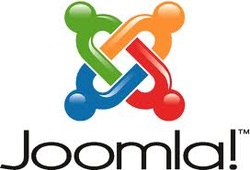
Over 9,200 free and commercial extensions are available from the official Joomla! Extension Directory, and more are available from other sources. It is estimated to be the second most used CMS on the Internet after WordPress. Joomla won the Packt Publishing Open Source Content Management System Award in 2006, 2007, and 2011.
You can think of a Joomla! website as bringing together three elements:
- your content, which is mainly stored in a database;
- your template, which controls the design and presentation of your content (such as fonts, colors and layout);
- Joomla! which is the software that bring the content and the template together to produce webpages.
The content and design of a Joomla template is separate and can be edited, changed and deleted separately. The template is where the design of the main layout for a Joomla site is set. This includes where users place different elements (components, modules, and plug-ins), which are responsible for the different types of content. If the template is designed to allow user customization, the user can change the content placement on the site, i.e. putting the main menu on the right or left side of the screen.
Template Components
Layout
The template is the where the design of the main layout is set for a Joomla site. This includes where users place different elements (components, modules, and plug-ins, which are responsible for different types of content.
Color Scheme
Using CSS within the template design, users can change the colors of the backgrounds, text, links or just about anything that they could using (X)HTML code.
Images and Effects
Users can also control the way images are displayed on the page and even create flash-like effects such as drop-down menus.
Fonts
The same applies to fonts. They are set within the template's CSS file(s) to create a uniform look across the entire site, which makes it easy to change the whole look just by altering one or two files rather than every single page.
Joomla! is composed of a Platform and extensions.
Joomla! extensions
Joomla! extensions help extend the Joomla web sites' ability. There are five types of extensions for Joomla: components, modules, plugins, templates, and languages. Each of these extensions handles a specific function.
Components: they are the largest and most complex extensions. They can be seen as mini-applications. Most components have two parts: a site part and an administrator part. Every time a Joomla page loads, one component is called to render the main page body. Components are the major portion of a page because a component is driven by a menu item and every menu item runs a component.
Plugins: they are more advanced extensions and are, in essence, event handlers. In the execution of any part of Joomla, a module or a component, an event can be triggered. When an event is triggered, plugins that are registered with the application to handle that event execute. For example, a plugin could be used to block user-submitted articles and filter out bad words.
Templates: this describes the main design of the Joomla web site and is the extension that allows users to change the look of the site. Users will see modules and components on a template. They are customizable and flexible. Templates determine the style of a website.
Modules: rendering pages flexibly in Joomla requires a module extension, which is then linked to Joomla components to display new content or new images. Joomla modules look like boxes – like the search or login module. However, they don’t require HTML to Joomla to work.
Languages: they are very simple extensions that can either be used as a core part or as an extension. Language and font information can also be used for PDF or PSD to Joomla conversions.
Joomla also has built-in extensions which include: component (Banner, Contacts, Joomla! Update, Messaging, Newsfeeds, Redirect, Search, Smart Search), Content, Menus, ect.
 RSS Feed
RSS Feed
